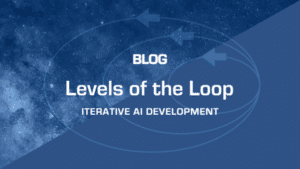The realm of artificial intelligence has always thrived at the convergence of diverse mathematical concepts. Among these, Markov Chains — rooted in probability theory — have demonstrated remarkable versatility. When applied to the burgeoning field of knowledge graphs, these chains unlock new dimensions in link predictions, bridging knowledge gaps and fostering more cohesive, comprehensive networks.
1. A Glimpse into Markov Chains
At its core, a Markov Chain represents a system undergoing transitions from one state to another, with the probability of each transition dependent solely on the current state and not on prior sequences. Picture a board game: each move or step is akin to transitioning between states, influenced by the current position but not the path that led there.
2. Knowledge Graphs: Structuring the World’s Information
Knowledge graphs, on the other hand, are intricate networks where nodes represent entities (like people, places, concepts) and edges represent relationships between these entities. Think of them as mind maps that offer a structured representation of vast and complex information.
3. Fusing Markov Chains with Knowledge Graphs
How do Markov Chains fit into this landscape? Consider an incomplete knowledge graph. The challenge: predicting the potential relationships or links between nodes. This is where Markov Chains shine.
Random Walks: Starting from a node, we can simulate a series of transitions or ‘walks’ to adjacent nodes based on certain probabilities. By doing this repeatedly, we can identify paths that are more frequently traversed, hinting at potential relationships.
Transition Matrices: Representing the likelihood of moving from one node to another, these matrices become the core mechanism for our Markov Chain, providing a probabilistic understanding of how information flows within the graph.
4. Advancements in Link Predictions
Using Markov Chains for link predictions offers several advantages:
Probabilistic Insights: Instead of binary predictions, we obtain a probability distribution over potential links, offering a nuanced view of potential relationships.
Scalability: Markov Chains can efficiently handle large-scale knowledge graphs, making them suitable for real-world applications.
Adaptability: As knowledge graphs evolve, Markov Chains can adapt, ensuring that predictions remain relevant over time.
5. Challenges and Considerations
While promising, the integration of Markov Chains and knowledge graphs isn’t without challenges. Ensuring the accuracy of link predictions requires a careful calibration of the Markov model, particularly in ensuring that the transition probabilities genuinely represent the underlying data structure.
Moreover, there’s the inherent risk of amplifying biases present in the initial graph. As with all AI models, attention to data integrity and fairness is paramount.
6. Looking Ahead
The marriage of Markov Chains and knowledge graphs paints an exciting picture of the future. As we push the boundaries of link predictions, we inch closer to more connected, comprehensive knowledge structures that can significantly enhance recommendation systems, semantic search engines, and more.
Markov Chains and knowledge graphs exemplify the beauty of AI — the fusion of mathematical elegance with real-world applications. By continuing to explore this synergy, we stand at the cusp of transforming how we represent, connect, and predict relationships within vast arrays of knowledge. As always, the journey is as exhilarating as the destination.


